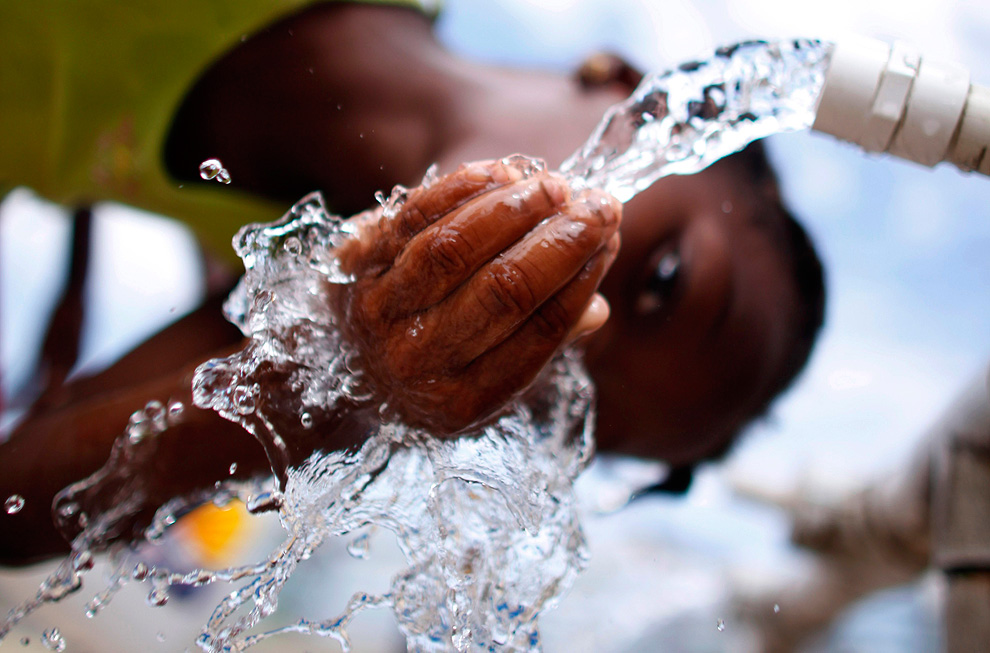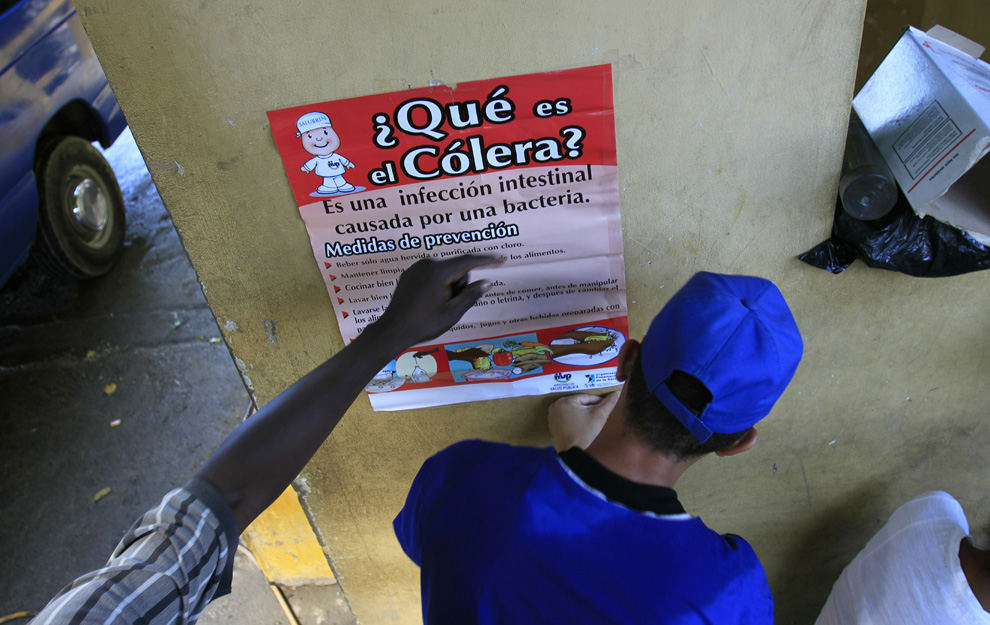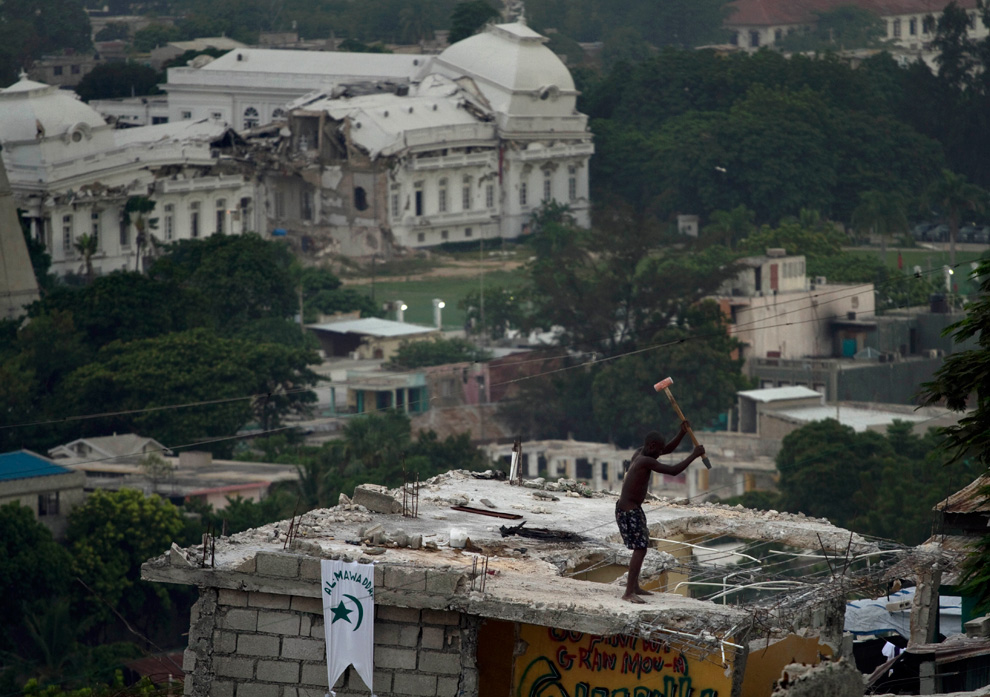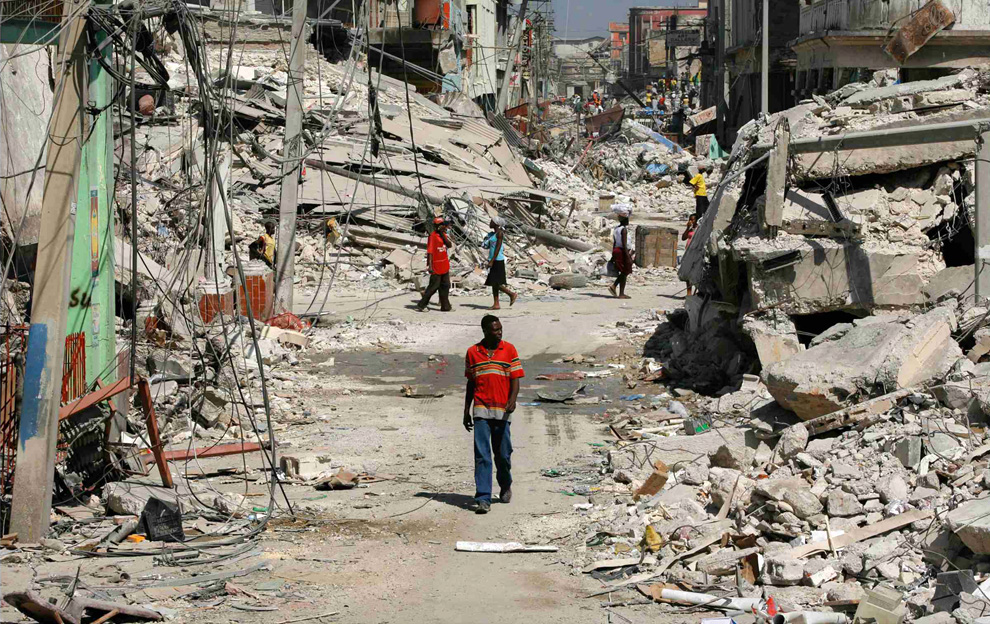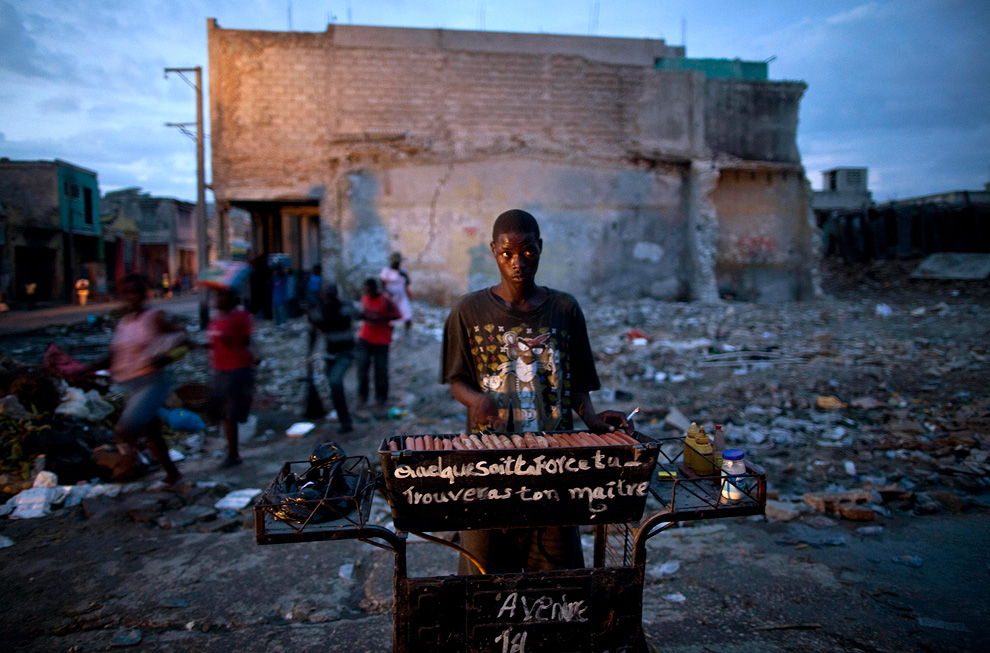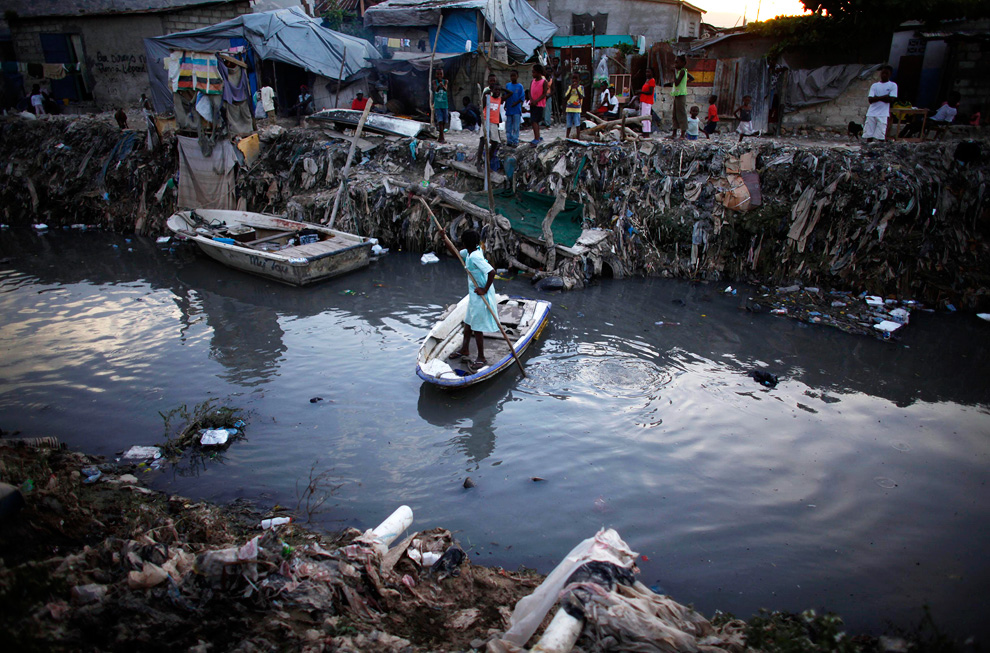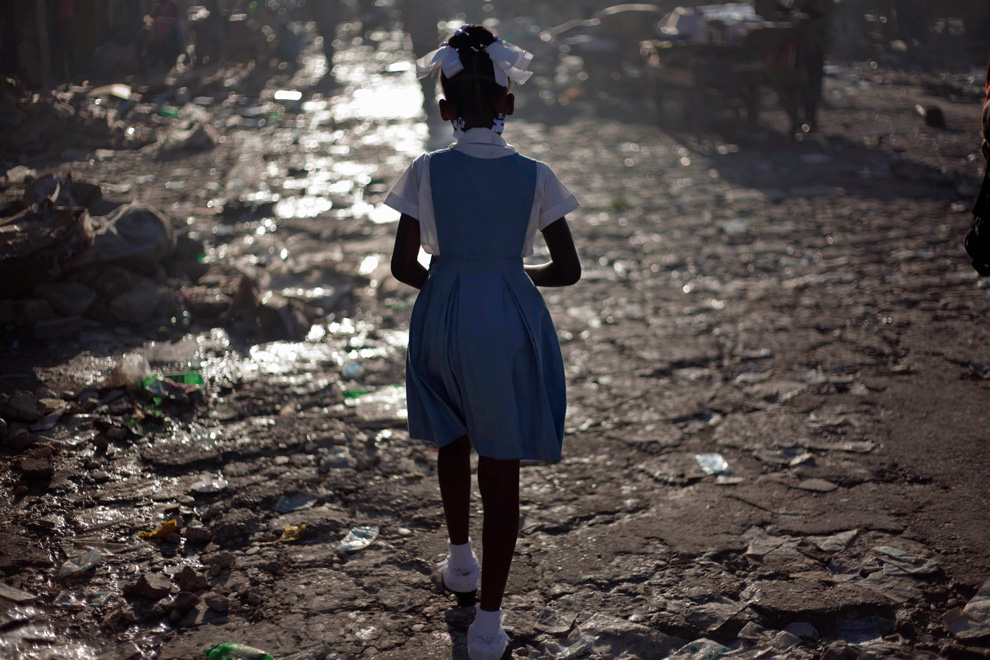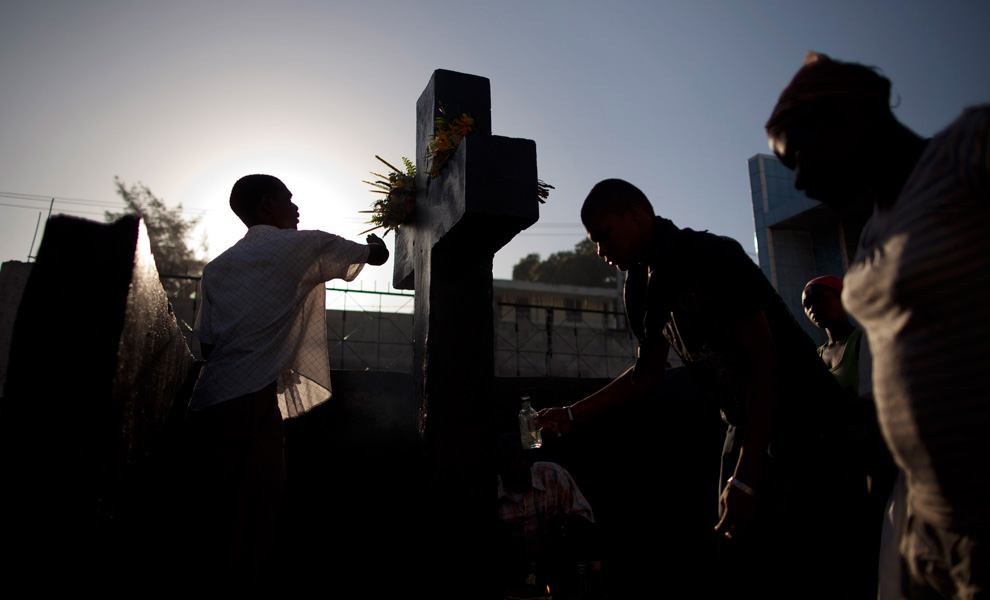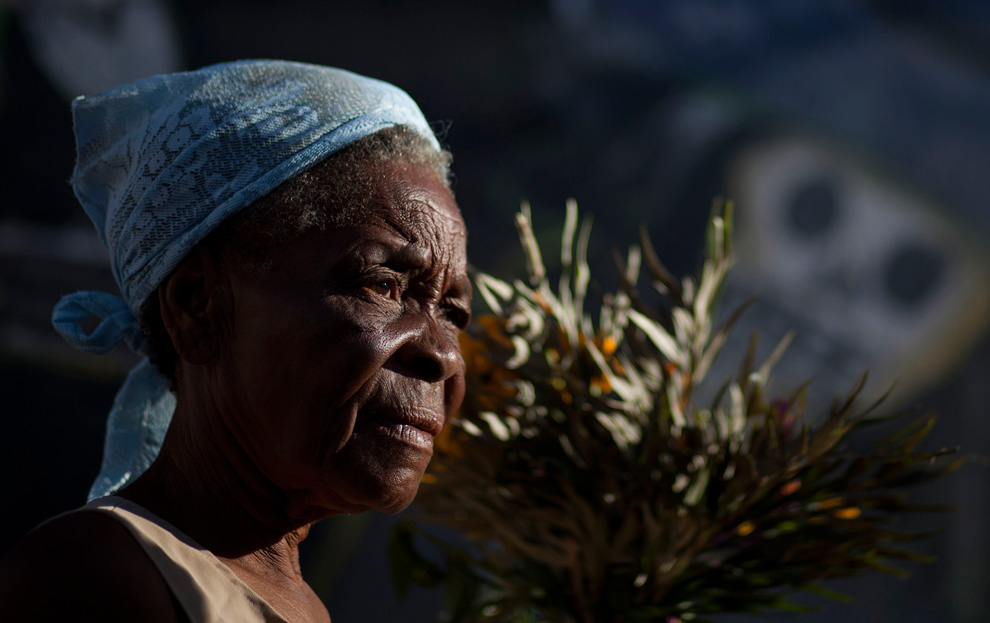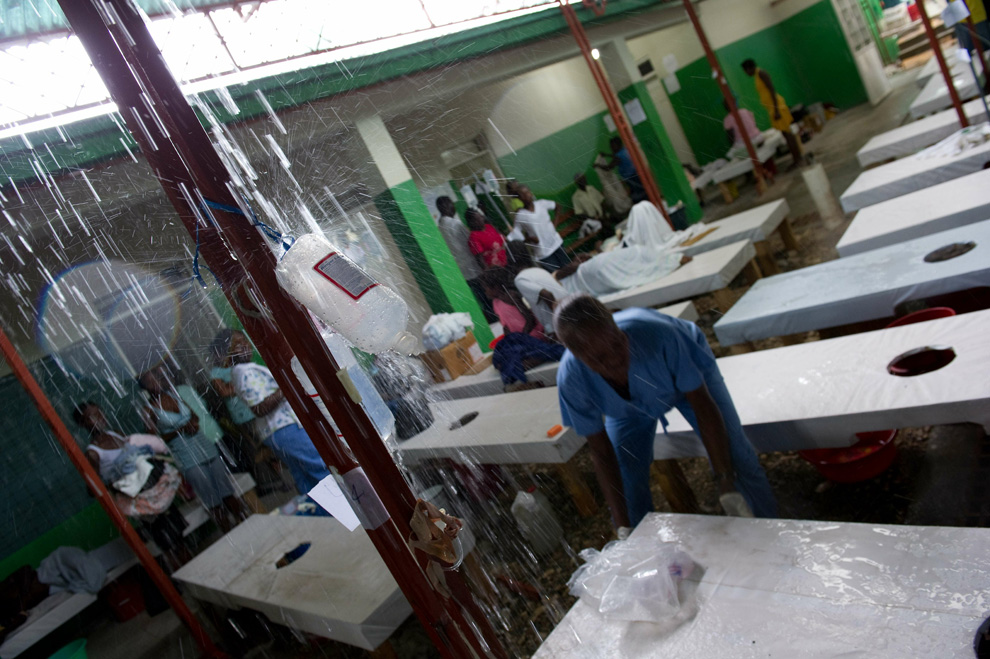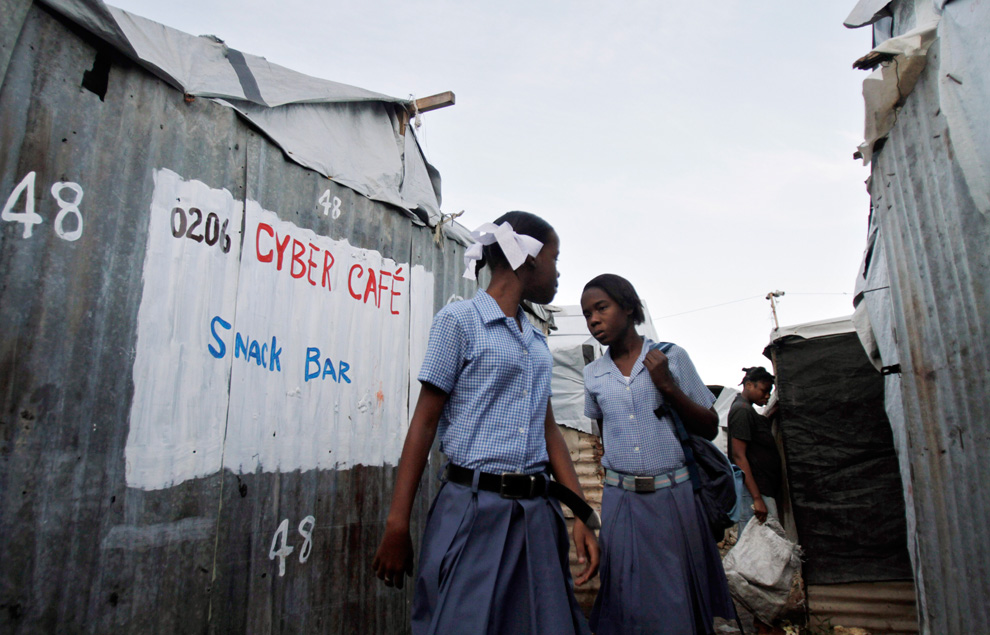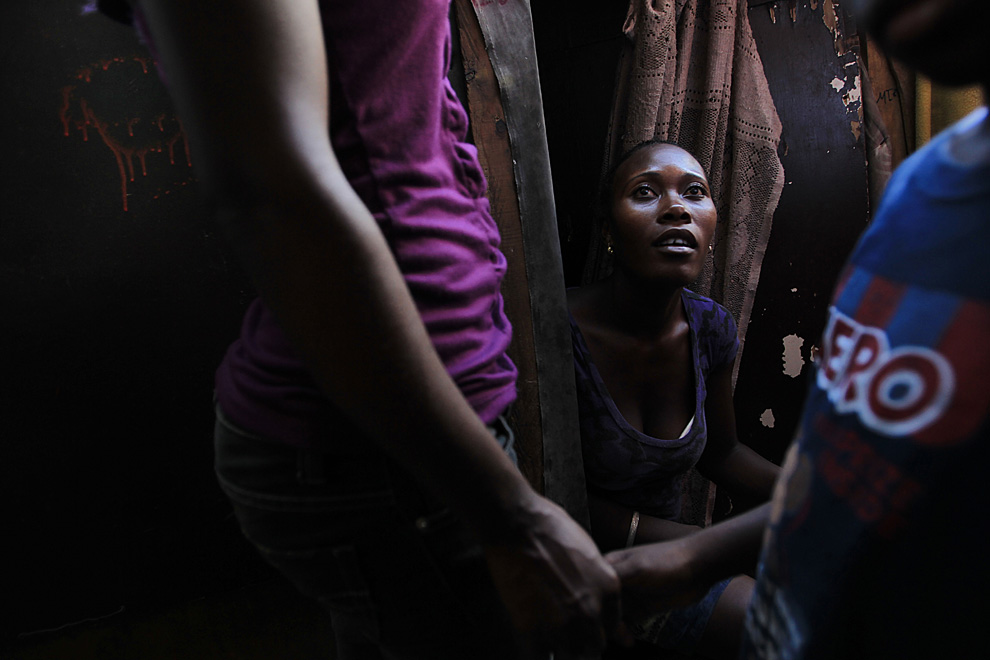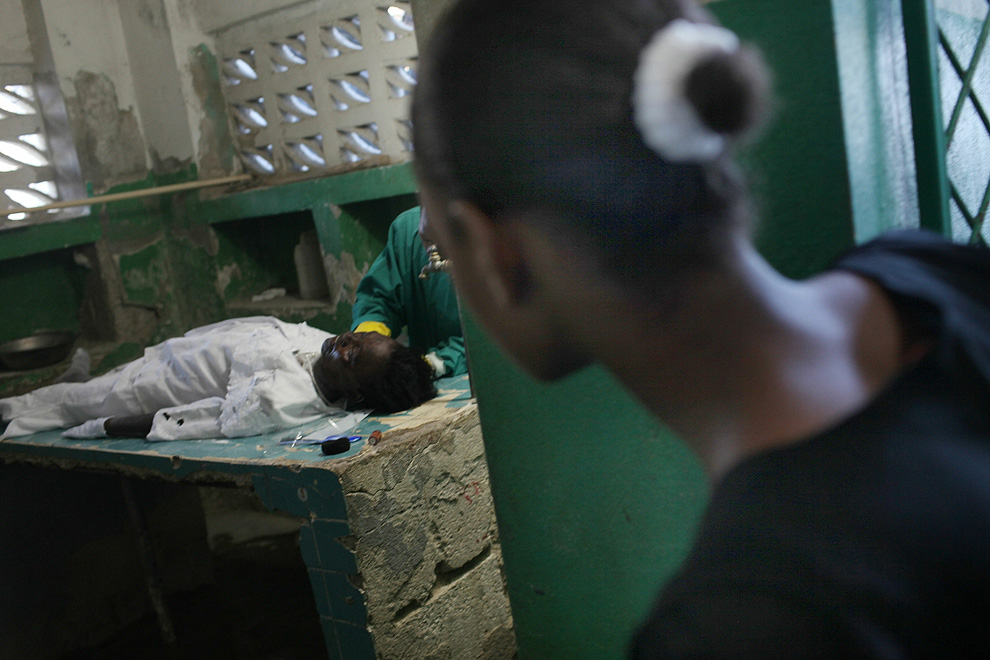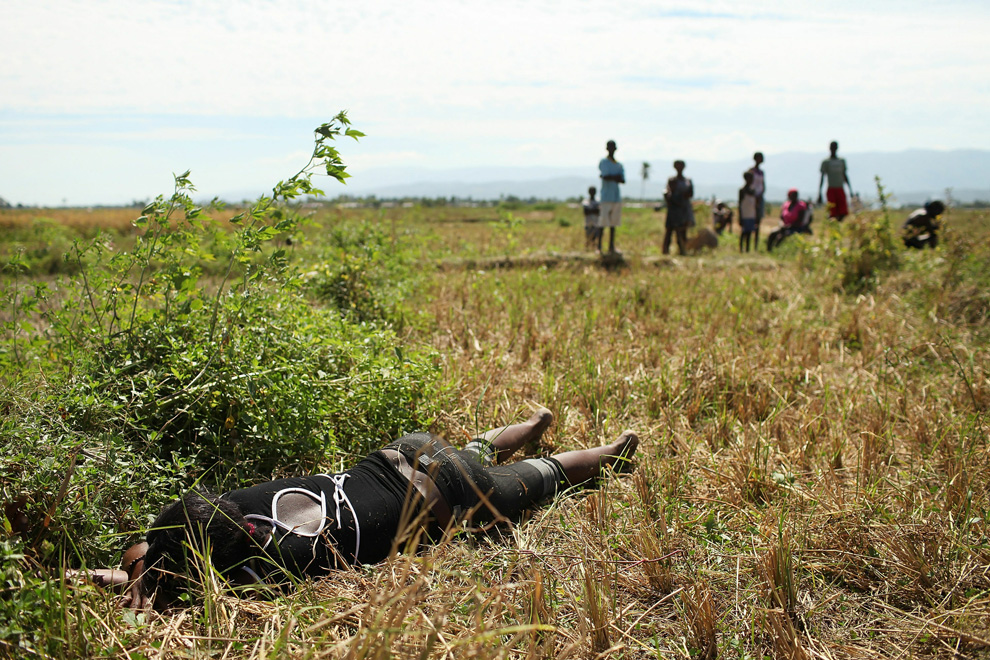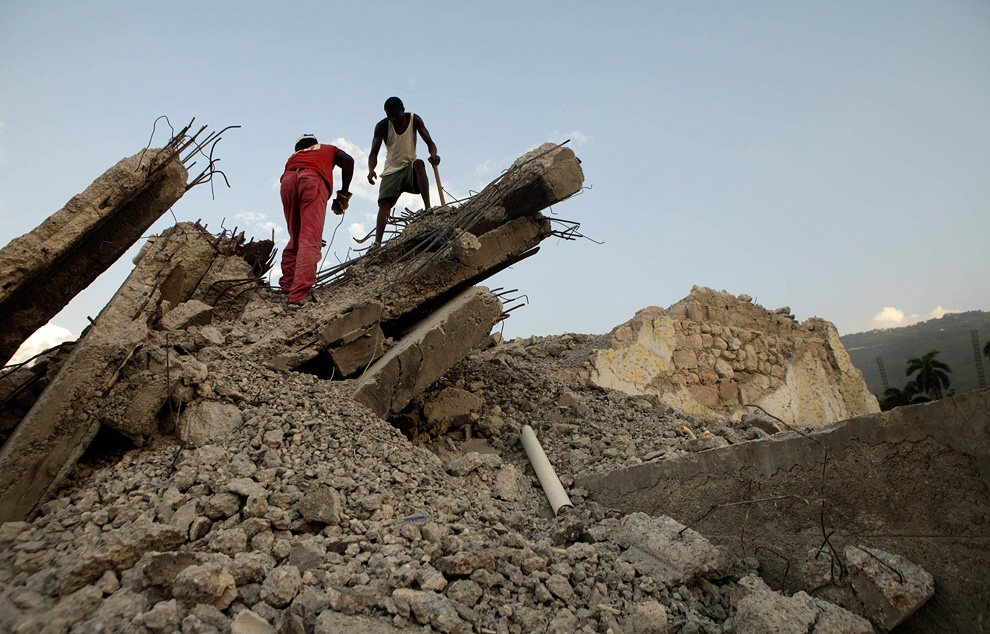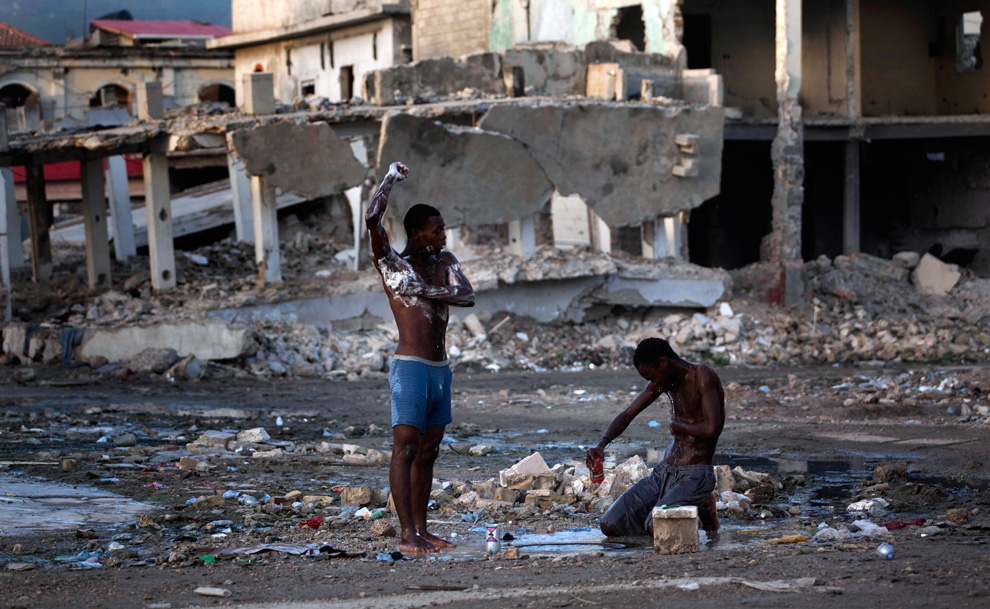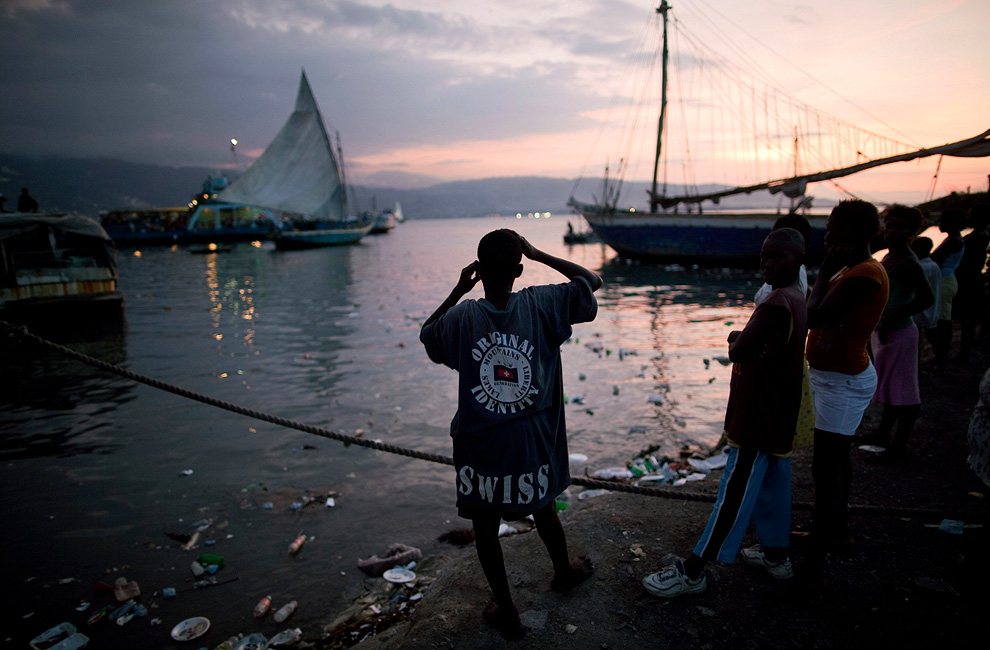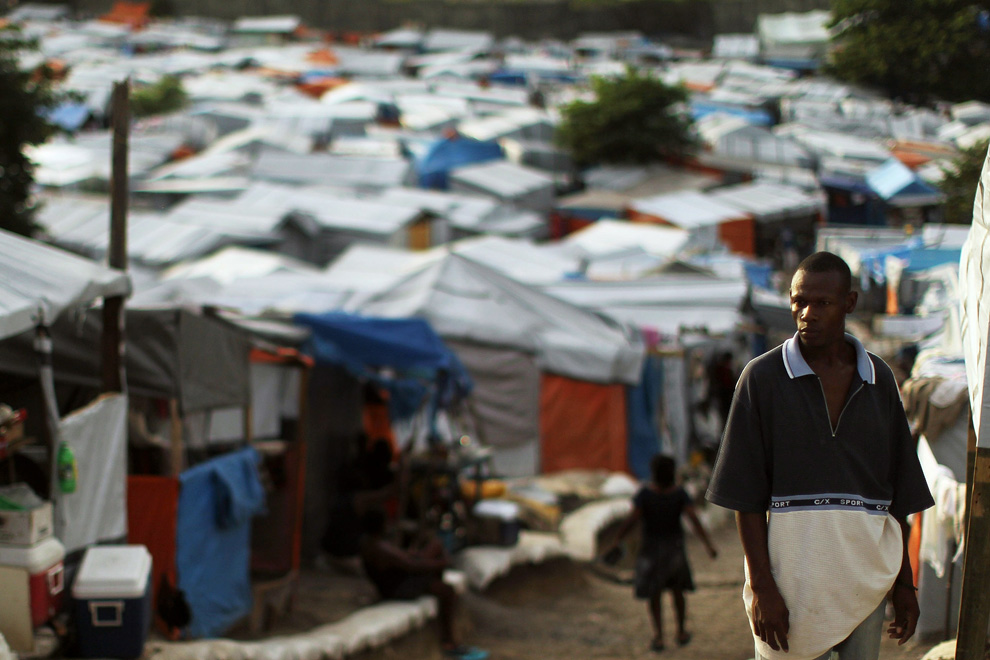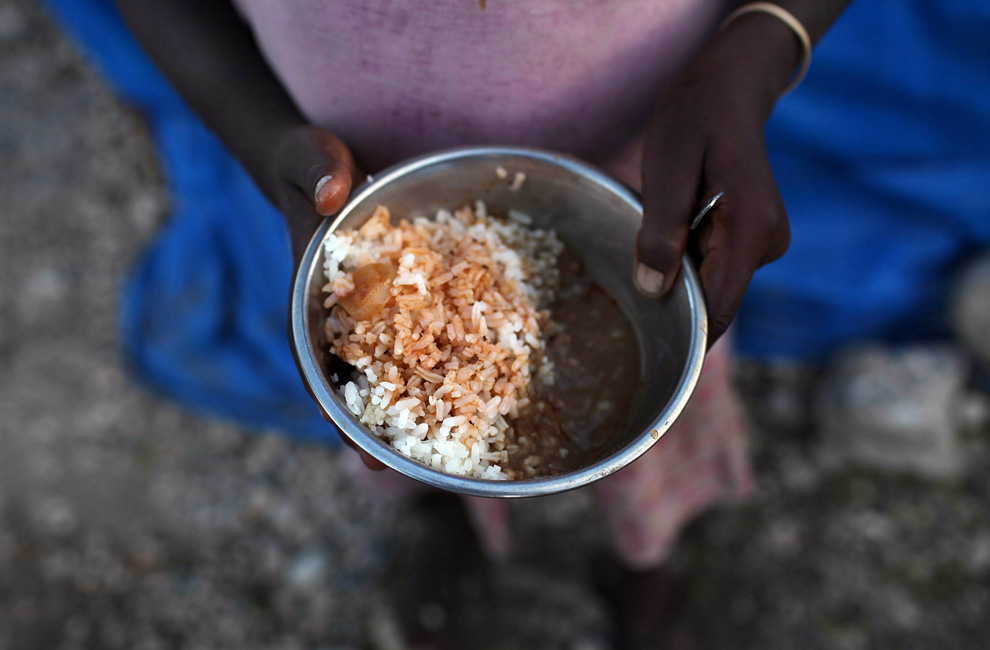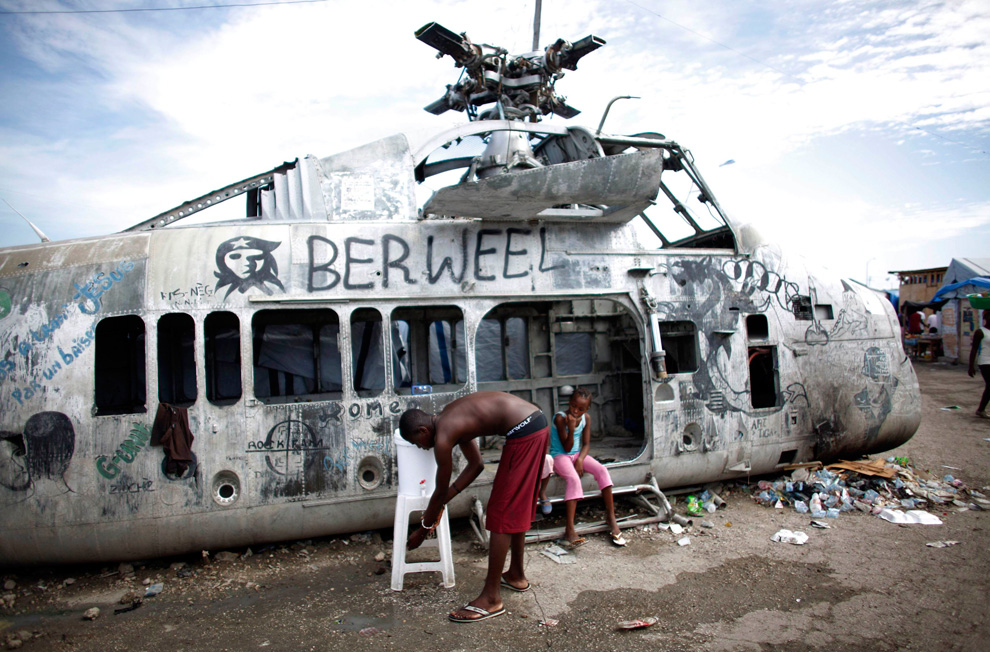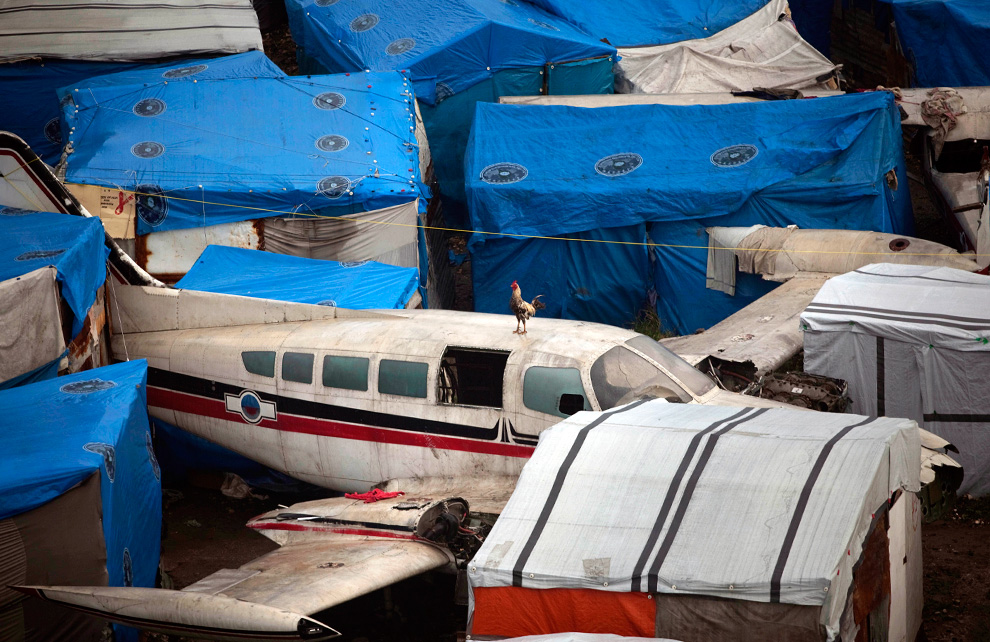
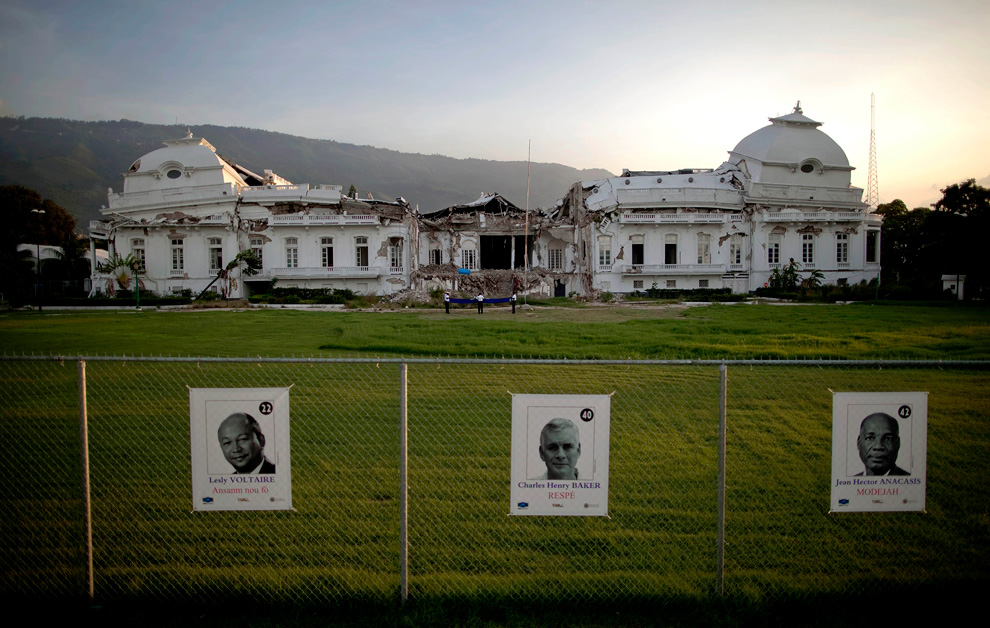
Photos of Lesly Voltaire, of the Ansanm nou fo party, or “Together we are strong” party, left, Charles Henry Baker, of the RESPE party, or “Respect” party center and Jean Hector Anacasis, of the Modejahthe party, or “Democratic Movement of the Haitian Youth”, all three presidential candidates for Haiti’s general elections, are hung from a fence surrounding the earthquake-damaged National Palace in Port-au-Prince, Haiti on Monday, Oct. 11, 2010. Haiti will hold elections Nov. 28. (AP Photo/Ramon Espinosa) #
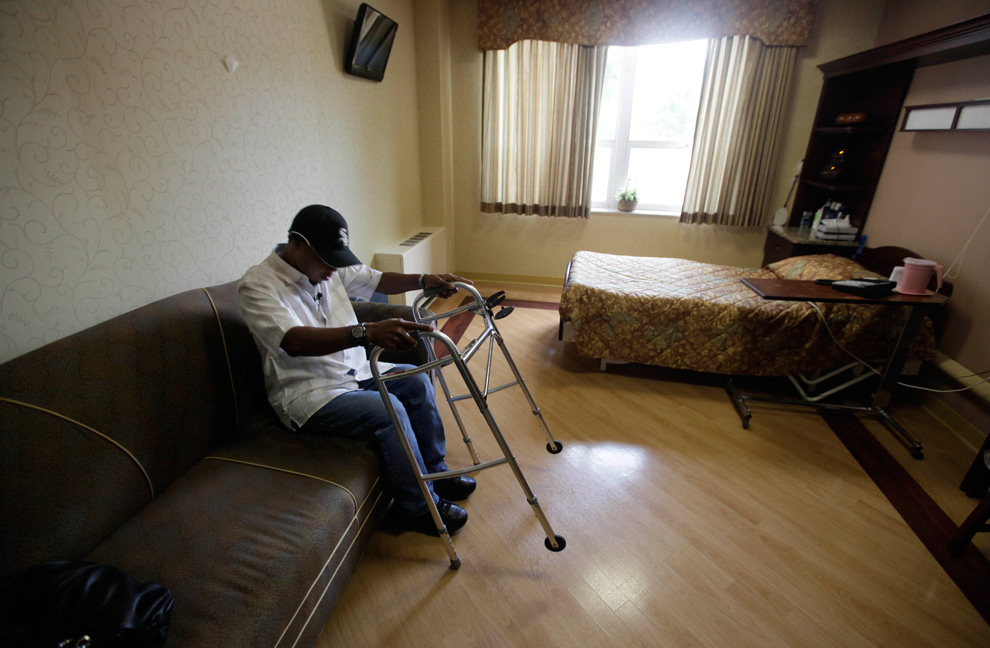
Bazelais Suy returns to his room after working with rehab therapists at Glencrest Nursing & Rehabilitation Center in Chicago, Illinois. Suy is a Haitian student activist whose spine was crushed when a university building collapsed in Haiti’s catastrophic earthquake last January. He was airlifted to Chicago for six months of intensive rehabilitation and recently returned to Haiti with hopes of helping rebuild the country. Photo taken on June 22, 2010. (AP Photo/M. Spencer Green) #

After an 8-month separation, Abby Emile, 3, from Haiti, is reunited with her mother, Lynda Maurice in Boston, Massachusetts on August 14th, 2010. Lynda had flown to the United States on a visa in December of 2009, to be with her husband. A problem with immigration paperwork meant young Abby had to stay behind in Haiti with relatives for a short while – then the Earthquake hit in January, and eight more months would pass until Abby was able to be with her parents once more. (Boston Globe/Kayana Szymczak) #
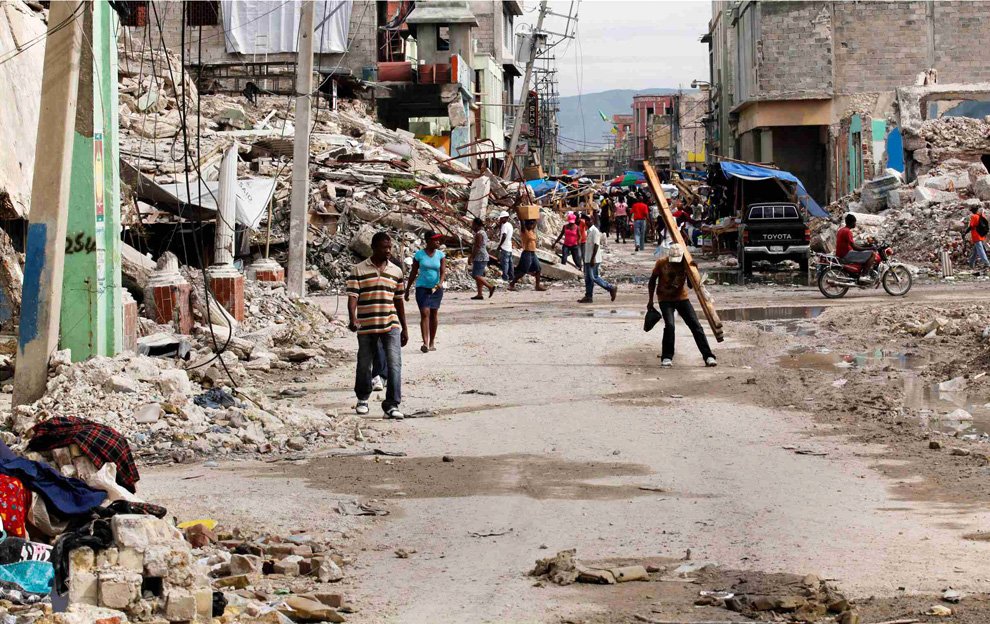
(2 of 2) An “after” photograph from September 30, 2010 – seven months later – shows Haitians walking on the same street as above. By some estimates, only 2 percent of the 250 million cubic meters of debris in Port-au-Prince has been cleared, for reasons ranging from lack of equipment and money to an abysmal property records system. Meanwhile, most Haitians just live and work around the piles of debris. (REUTERS/Eduardo Munoz) #

An employee of Haiti’s Ministry of Health shows a device that measures the level of chlorine in the water stored in plastic tanks that is consumed by earthquake survivors at a refugee camp in Port-au-Prince, Haiti, Monday, Oct. 25, 2010. The Haitian government is conducting tests in the camps around the capital and purifying the water with chlorine tablets in order to avoid the spread of the cholera outbreak that killed more than 250 people in rural Haiti. (AP Photo/Ramon Espinosa) #

A tanker truck deposits excrement from the Nepali UN base in an area 400 meters away from the base in Mirebalais, Haiti, Wednesday, Oct. 27, 2010. U.N. investigators took samples of foul-smelling waste flowing behind a Nepalese peacekeeping base toward an infected river system on Wednesday, following persistent accusations that excrement from the newly arrived unit caused the epidemic that has sickened more than 4,000 people in the earthquake-ravaged nation. (AP Photo/Ramon Espinosa) #
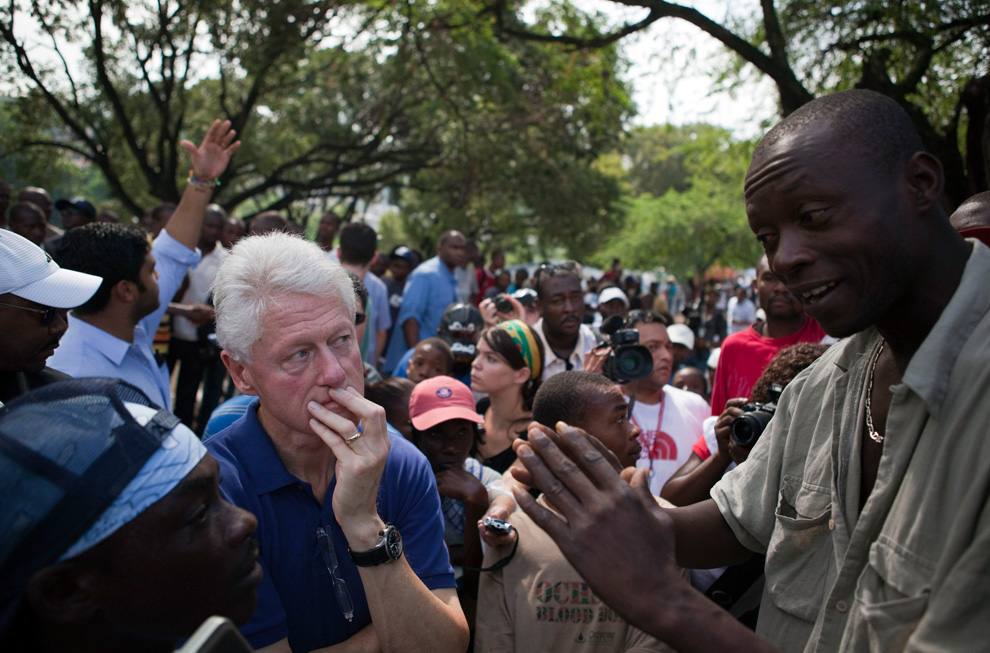
Former U.S. President Bill Clinton speaks with a resident as he walks through the 55,000 resident tent camp at the Petionville Club run by the J/P Haitian Relief Organization in Port au Prince October 6, 2010. The Clinton Foundation announced on Wednesday that it will provide $500,000 to help continue management of the camp, run by U.S. actor Sean Penn. (REUTERS/Allison Shelley) #
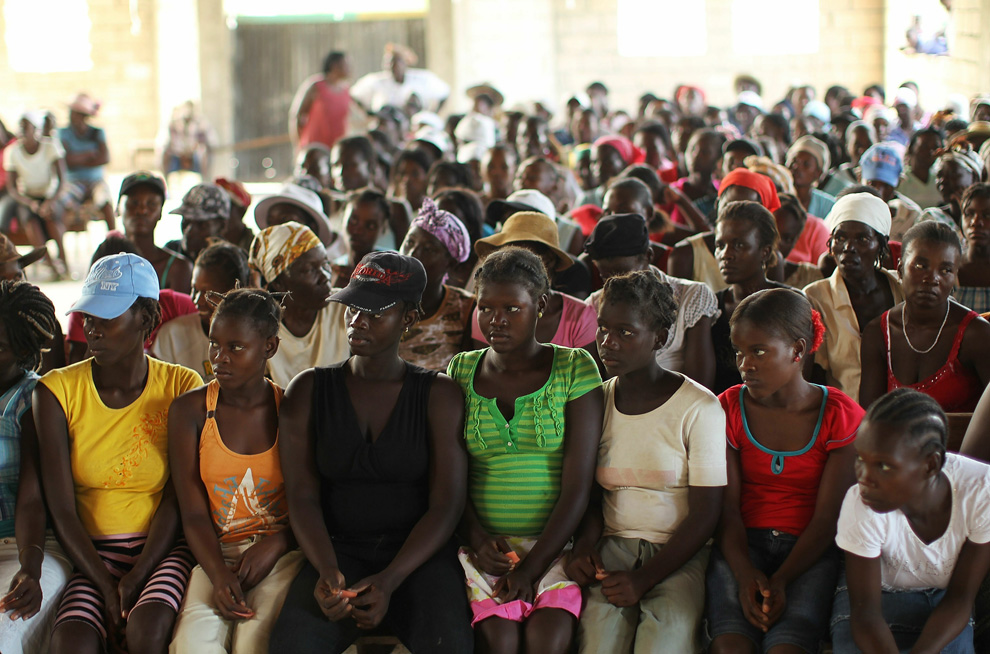
People participate in the distribution of cholera protection kits by a French non-governmental organization (NGO) October 30, 2010 in Dubuisson, Haiti. The NGO, Acted, gave a demonstration on sanitary precautions and distributed water purification kits to residents in the community which has witnessed numerous cases of cholera. (Spencer Platt/Getty Images) #
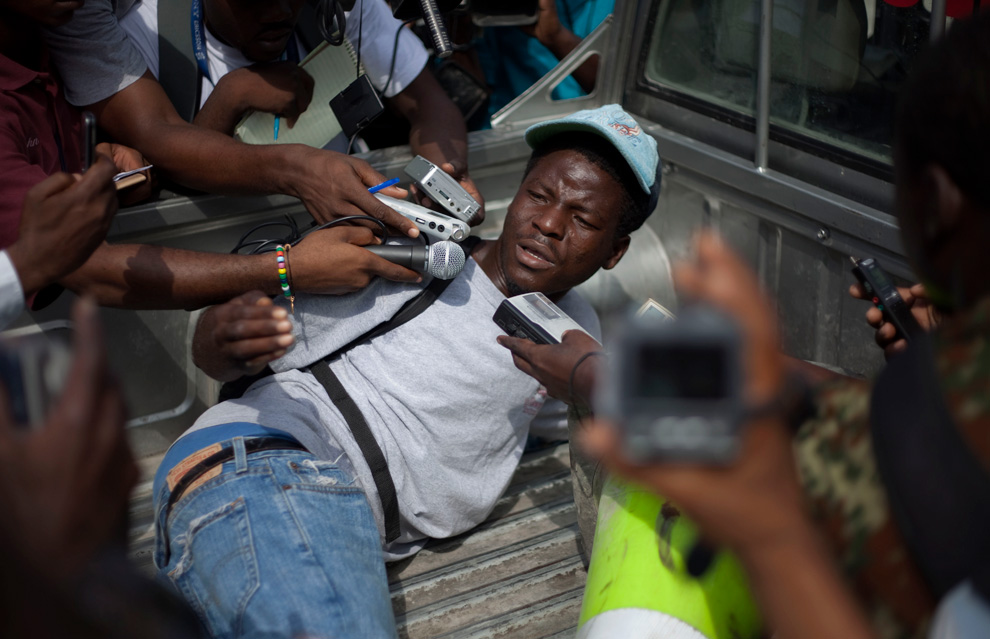
Journalists interview a man who was detained near the National Penitentiary during a prisoners’ uprising in downtown Port-au-Prince, Haiti, Sunday, Oct. 17, 2010. U.N. police spokesman Jean-Francois Vezina said seven foreign hostages were held briefly by prisoners during the unrest at the prison, but were freed and according to Haiti’s law enforcement officials, three inmates were killed. (AP Photo/Ramon Espinosa) #

